Art World
An Artist Traveled Across the U.S. to Ask 1,000 Strangers for Advice on Life. He Shared the Photos of His Epic Road Trip With Us
The Chicago-based photographer Imran Nuri hopes to turn the ambitious project into a book.
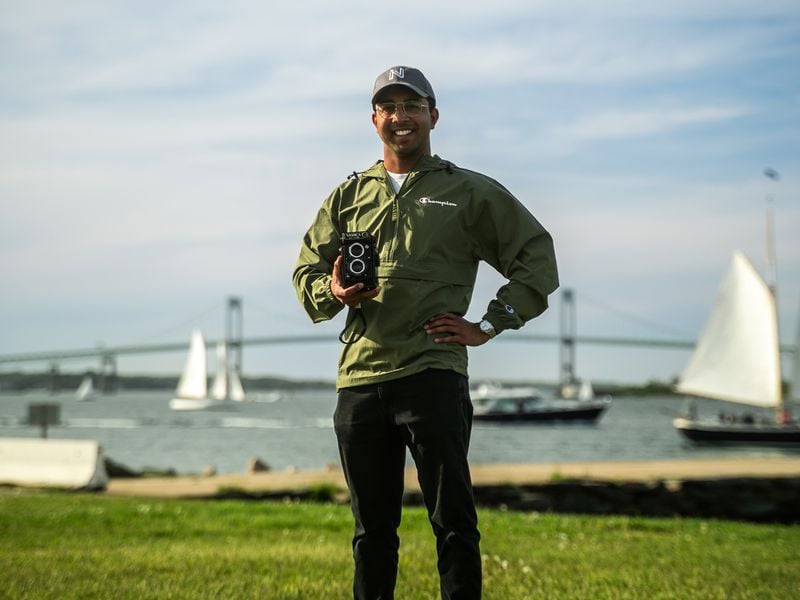
The Chicago-based photographer Imran Nuri hopes to turn the ambitious project into a book.

Sarah Cascone

Back in April, photographer Imran Nuri quit his day job in healthcare marketing, packed his life and his belongings into his Toyota Camry, and set out on an epic road trip. His goal was to photograph 1,000 strangers, in film, across all 48 contiguous states in the U.S., while asking each sitter for advice on life.
The 25-year-old Columbus, Ohio, native spent two-and-a-half months living out of his car during the portrait project, titled Advice From America (originally Advice from 1,000 Strangers). In total, it cost about $10,000 and cleared out his life savings. (He also took out a five-year loan, and received some support through his Patreon account.)
“I spent about $2,000 on gas, $1,500 on food, $1,000 on film and developing chemicals, $1,000 for a few stays at hotels here and there, and quite a few other smaller expenses,” Nuri said in an email to Artnet News. “Gym membership for showering, sunscreen, pepper spray, a cooler, a tattoo that matched one on a dying stranger I met in Colorado Springs, etc.”
The project was a massive creative undertaking, with 1,042 photos of 1,019 individuals shot on 87 rolls of film using a 50-year-old medium format Yashica Mat-124 G camera. And for much of his time on the road, Nuri had no idea how the photographs he had taken were coming out. Fortunately, a test roll he had developed in Oklahoma City, halfway through the trip, came out okay.
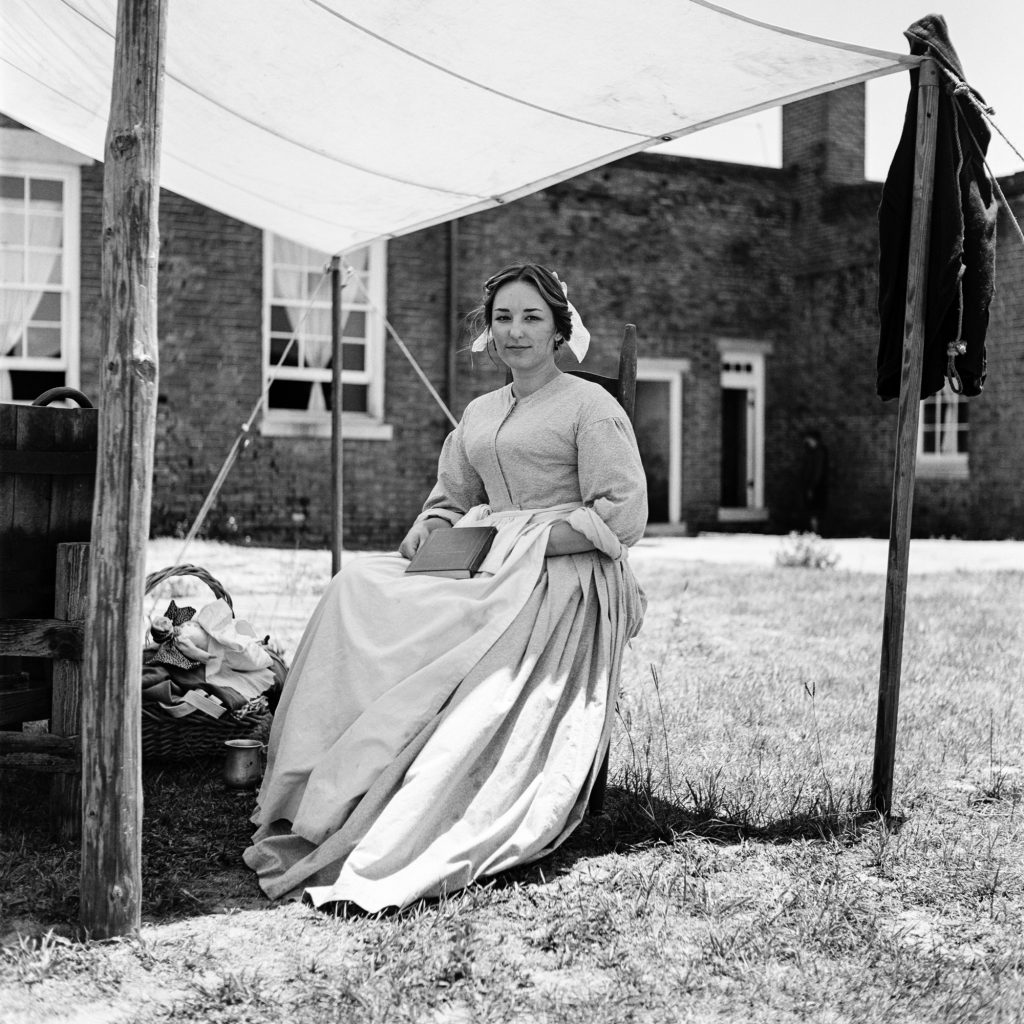
Imran Nuri, photo from his series “Advice From America.” Photo courtesy of the artist.
“I wish I would have given myself a WAY larger buffer of photos to cut,” Nuri admitted. “I took out the nine people who blinked (thank goodness this wasn’t more than 19). Only a handful were significantly blurry, and only one was so severely underexposed that it was unusable—and that was because I was having drinks with that person and our conversation was so good that I forgot to take the photo until it was too dark outside!”
Once he was home, Nuri developed the photographs by hand-mixing the chemicals, and, lacking a darkroom, using a daylight developing tank with a dark changing bag.
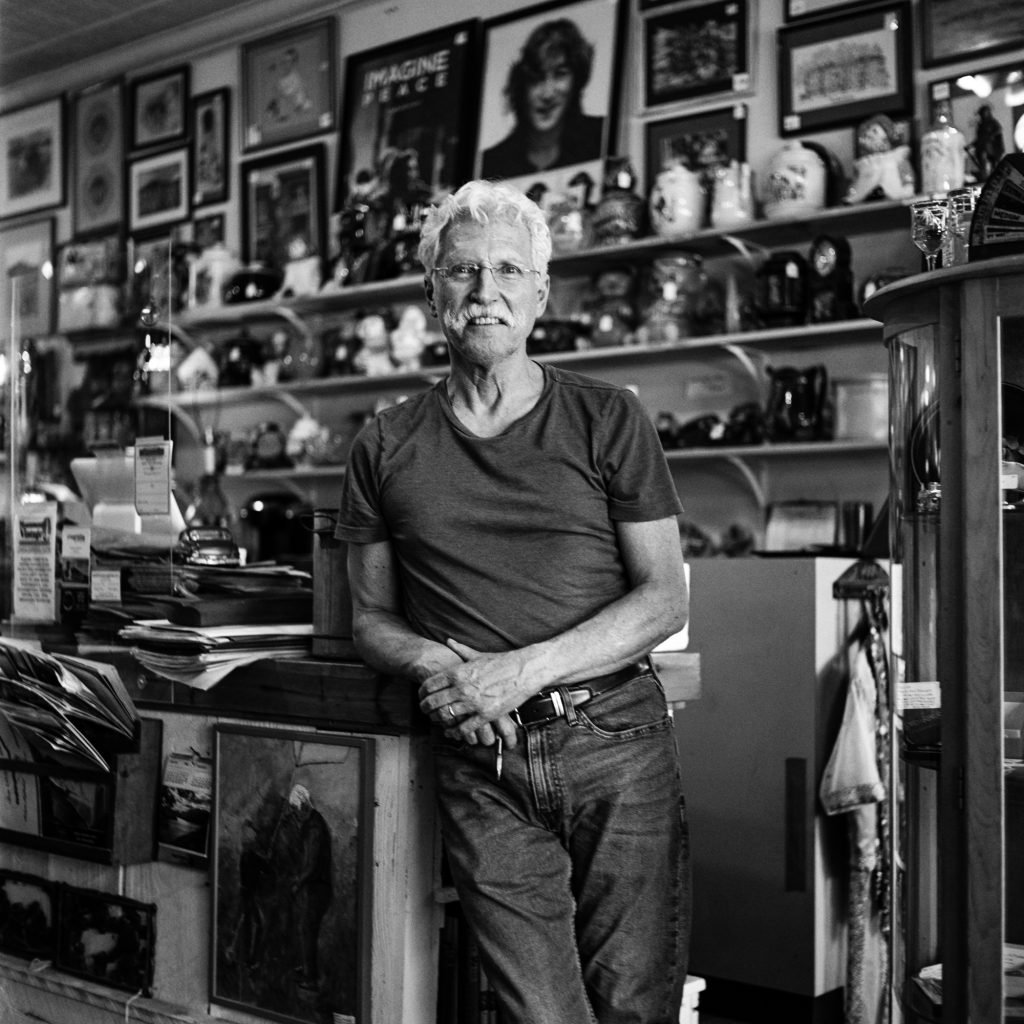
Imran Nuri, Stranger No. 37 from his series “Advice From America.” Photo courtesy of the artist.
“I hung the negatives up to dry in my childhood bathroom,” he said. “Before scanning my images, I had an air purifier on at full speed in a tiny room for a week straight before going in there to digitize. I’m glad I did that because I’m barely having to do dust removal for my photos now.
Nuri had to rent a 60-megapixel digital camera to digitize each portrait to share online. He is planning to turn the fruits of his 84-day journey into a book.
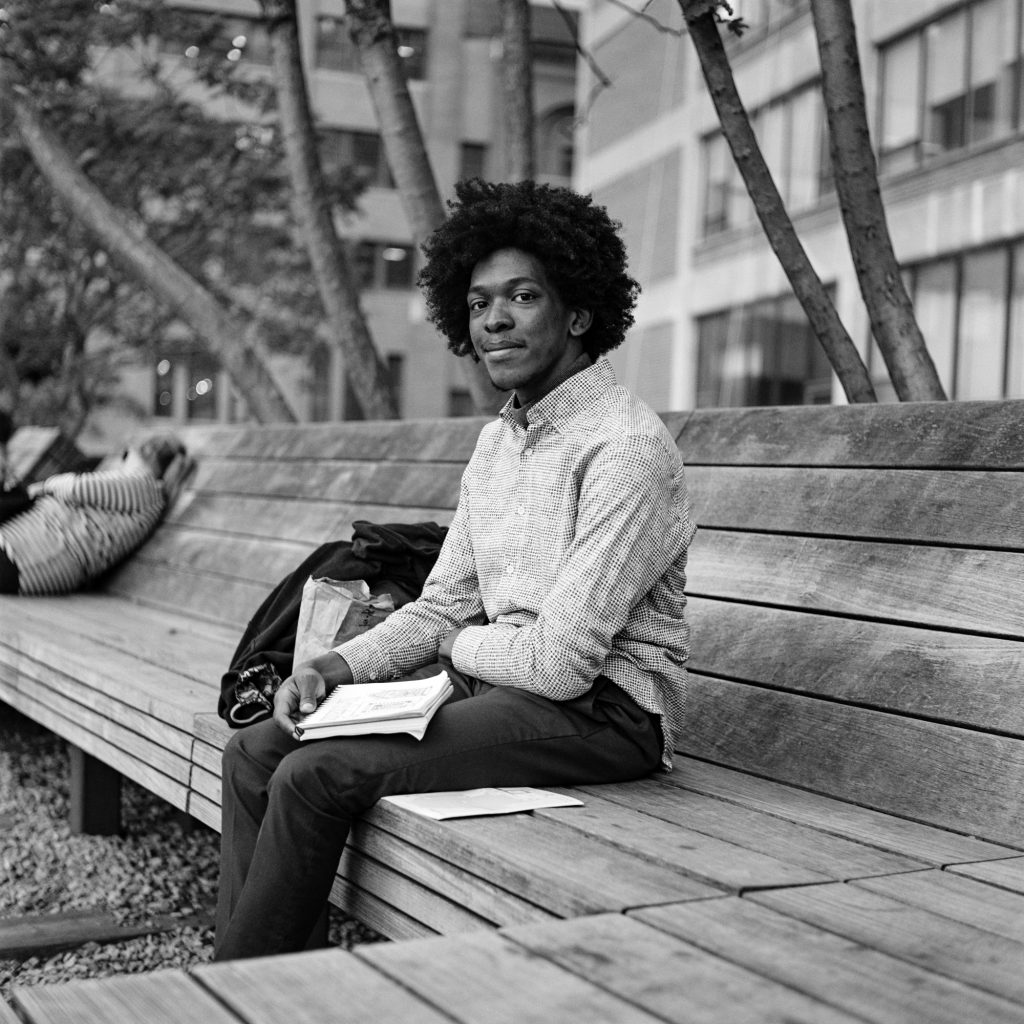
Imran Nuri, Stranger No. 162 from his series “Advice From America.” Photo courtesy of the artist.
Although Nuri doesn’t have any formal training in photography—he graduated from Ohio State University’s business college in 2020 with a marketing major and design thinking minor—he felt compelled to make his ambitious vision for the project a reality.
“Even without an art degree and little-to-no presence as an artist, I had to do it right now,” Nuri said. “While I’m positive the photos would have been even better if I practiced for a few more years or gone to art school, I also knew that the series of 1,000 photos would, as a whole, tell a huge story in itself.”
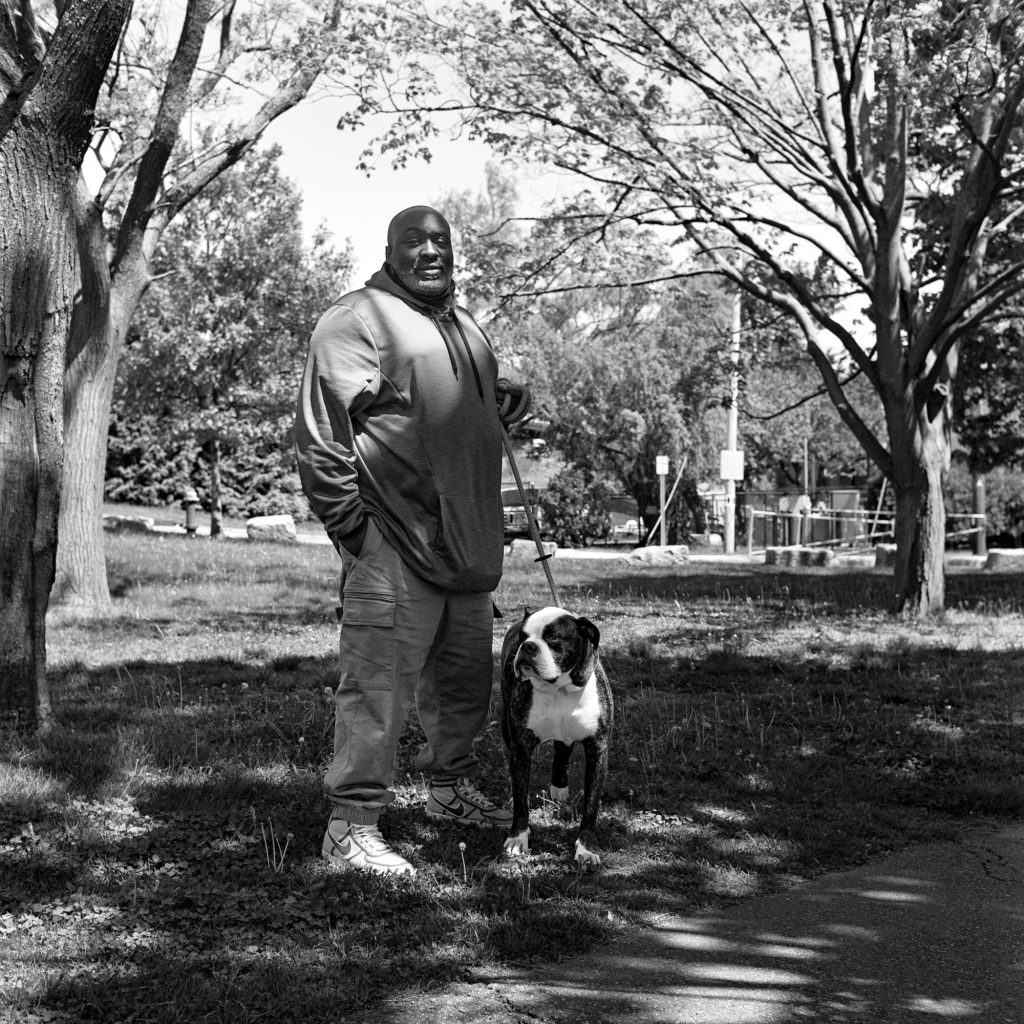
Imran Nuri, Stranger No. 125 from his series “Advice From America.” Photo courtesy of the artist.
Since returning home, Nuri has eased back into the workforce, taking a part-time internship at a start-up that helps car owners manage their expenses.
He’s also begun to share photos from his trip on social media, where they’ve clearly resonated with viewers. Nuri’s video introducing the project has six million views on Instagram, where he has 273,000 followers. It is also popular on TikTok, where he has close to 40,000 followers.
We spoke with Nuri about the challenges of planning out the project and what it meant to speak to so many strangers on such an intimate level.
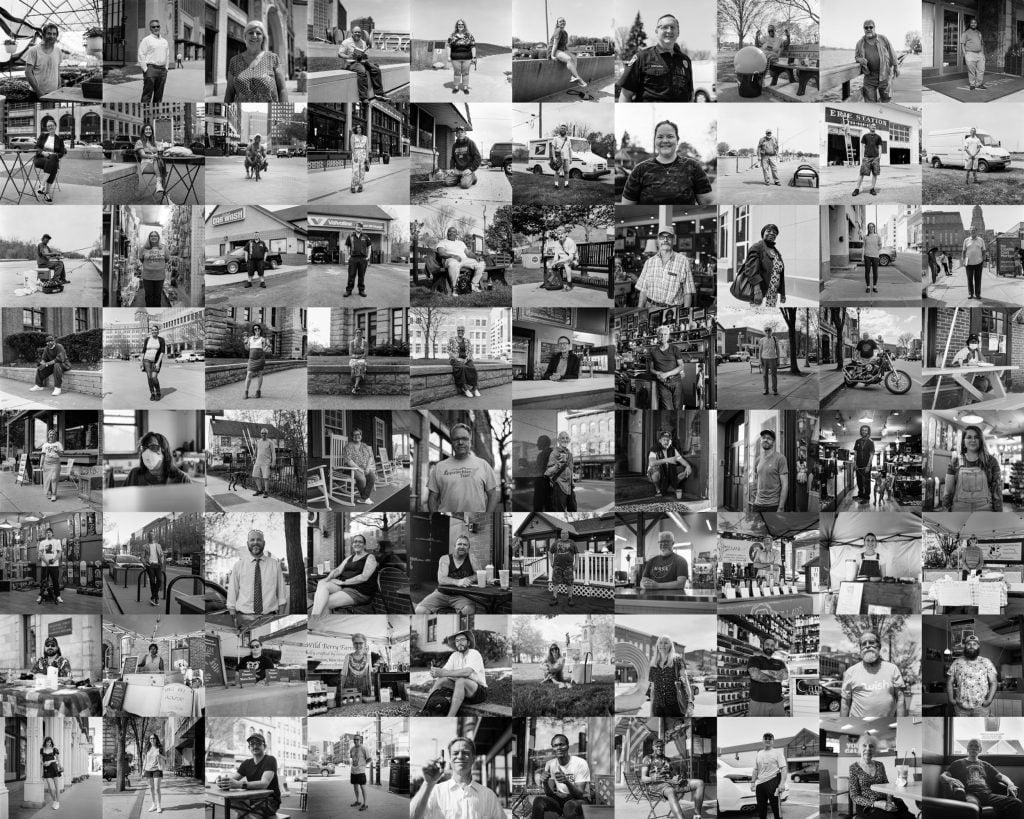
Imran Nuri, photos from his series “Advice From America.” Photo courtesy of the artist.
What inspired this project?
When I asked myself what would change about my life if I knew I only had a year left to live, the answer was clear: I would see as much of the country as I could while trying to figure out the meaning of life by asking strangers about what they know now that they wish they had known earlier. In other words, I would collect wisdom and experience in my final year.
I sure hope I’m not dying any time soon, but if I do, I’ll have done what I need to do. I ended up leaving my full-time job to do this project, knowing that I would undoubtedly learn more and find more satisfaction in doing this series than I ever could from a job.
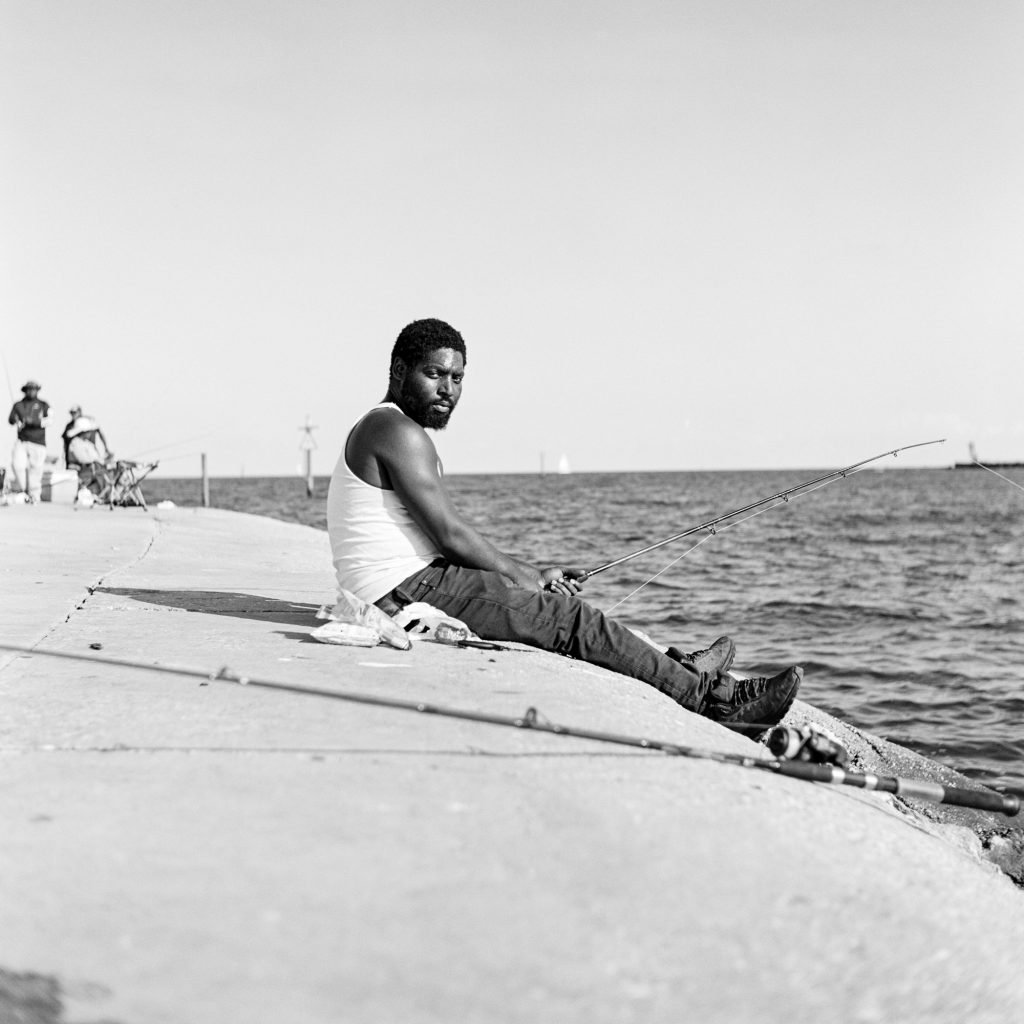
Imran Nuri, photo from his series “Advice From America.” Photo courtesy of the artist.
How did you map out your journey to visit 48 states in an efficient way?
I loosely based my map on something that a guy named Randy Olsen posted online years ago. He found a way for Google Maps to create an optimized 48-state route that hit either cities or monuments. I knew I would be starting in Columbus, and I wanted to go clockwise.
After creating an initial order of states, I ended up mostly winging it day by day. I had no exact route, and I often used Google Maps’ avoid highways feature so that I would see more untouched parts of the States. I ended up driving 15,298 miles.
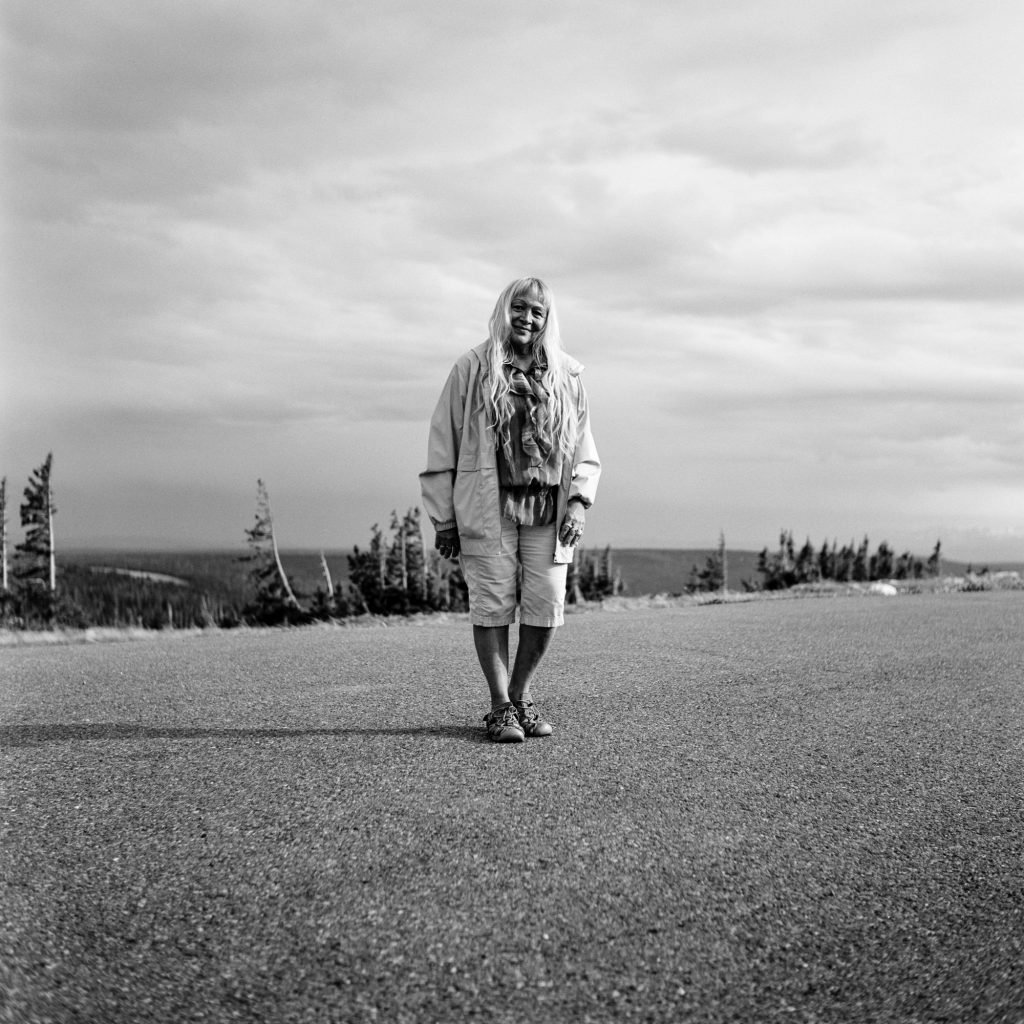
Imran Nuri, photo from his series “Advice From America.” Photo courtesy of the artist.
How widely had you traveled in the U.S. before this project, and what was your favorite place?
I had seen only a handful of pieces of the country prior to the trip. I grew up visiting my cousins in Minneapolis and going to conferences in Chicago and Washington, D.C. for my dad’s work. That’s mostly it.
My favorite places on this trip had to have been the Yurok Reservation on the West Coast, Bozeman, Montana, and basically all of the mountainous states across the country (Vermont, New Mexico, Colorado, Wyoming, Utah, and California). Growing up in Ohio, I saw nothing but flat farmland. The sight of mountains in person tickles my brain in the best way.

Imran Nuri, photo from his series “Advice From America.” Photo courtesy of the artist.
How long have you been doing film photography and why does the medium appeal to you?
I’ve been an artist since I was 13, working primarily with oil paints before taking photography more seriously as an art form. As a kid, I saw photography as a practical medium that was more suited for random everyday moments rather than creating and exploring ideas.
I think Gregory Crewdson was one of the first photographers to open my eyes to the world of staged and painterly photography. He’s obviously a master of the medium, and I knew that his continued use of a view camera and sheet film was an indicator that it was something special, even today. I didn’t start shooting on film until 2020, and I quickly realized its potential, especially in medium and large format, to create my ideas.
As a Gen Z’er, I grew up shooting digital photos (first on a three-megapixel point-and-shoot camera), so using film helped me to realize that photography can be extra special when it’s tangible. It feels more like I’m actually a part of the creation process when I have to choose a film stock, load the camera, meter the scene, develop the film, and finally digitize it, whereas on digital it almost feels too easy.
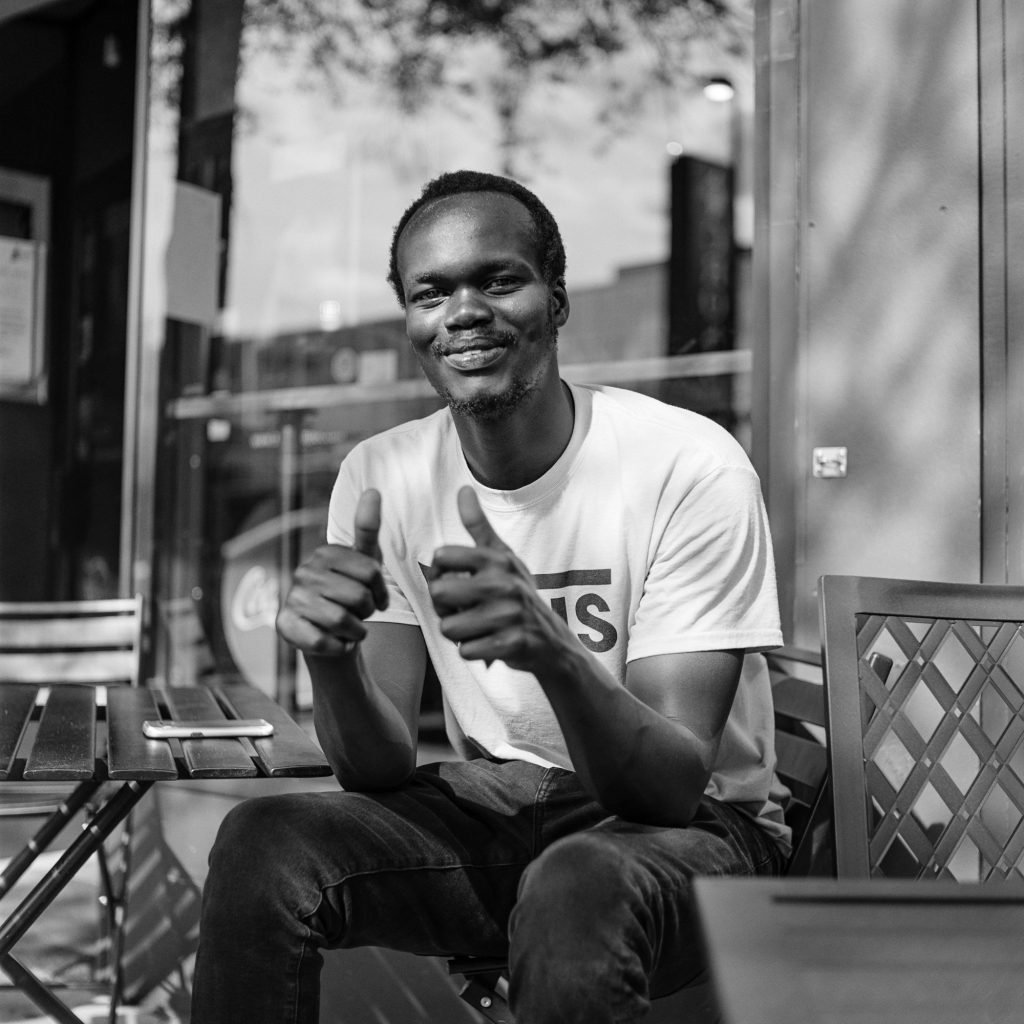
Imran Nuri, Stranger No. 76 from his series “Advice From America.” Photo courtesy of the artist.
How did people respond to you and was there any hesitancy about participating?
My spiel went like this: “Excuse me? I’m so sorry to bother you, but could I ask you a question real quick?” All but two people I met said yes to that. Then, I would say, “I’m driving across the U.S. and asking 1,000 strangers for life advice. I’d love to ask you a big life question if you’ve got just two minutes.”
After that, I would say about 90 percent of people were willing to chat with me. If they weren’t, they would say “I’m sorry, I’m running late for something” or just, “Ehhh, I don’t really feel like sharing anything right now.” Everyone else thought I was doing the coolest thing ever and were thrilled to be a part of it.

Imran Nuri, Stranger No. 148 from his series “Advice From America.” Photo courtesy of the artist.
How did you decide who to approach? Did you have a set number of people you wanted to talk to every day, or did you let things unfold more organically?
Generally speaking, I would only approach people who were alone. I found I got better, more vulnerable answers when I was one-on-one with people.
I’ve always had a special ability to make people feel safe and comfortable with me immediately. I made sure I was extra approachable by always staying clean-shaven, wearing my yellow Crocs, holding my twin-lens camera openly, and keeping a big smile on my face as I approached people. I kept extra distance when approaching women to make sure they would feel comfortable about me, a random man, approaching them.
My goal was to talk to about 20 people in each state, as well as in D.C. In some states, I got more than that, and in others, I got less. Some days I could get 30 stories in a day. On other days, I would get just one or two.
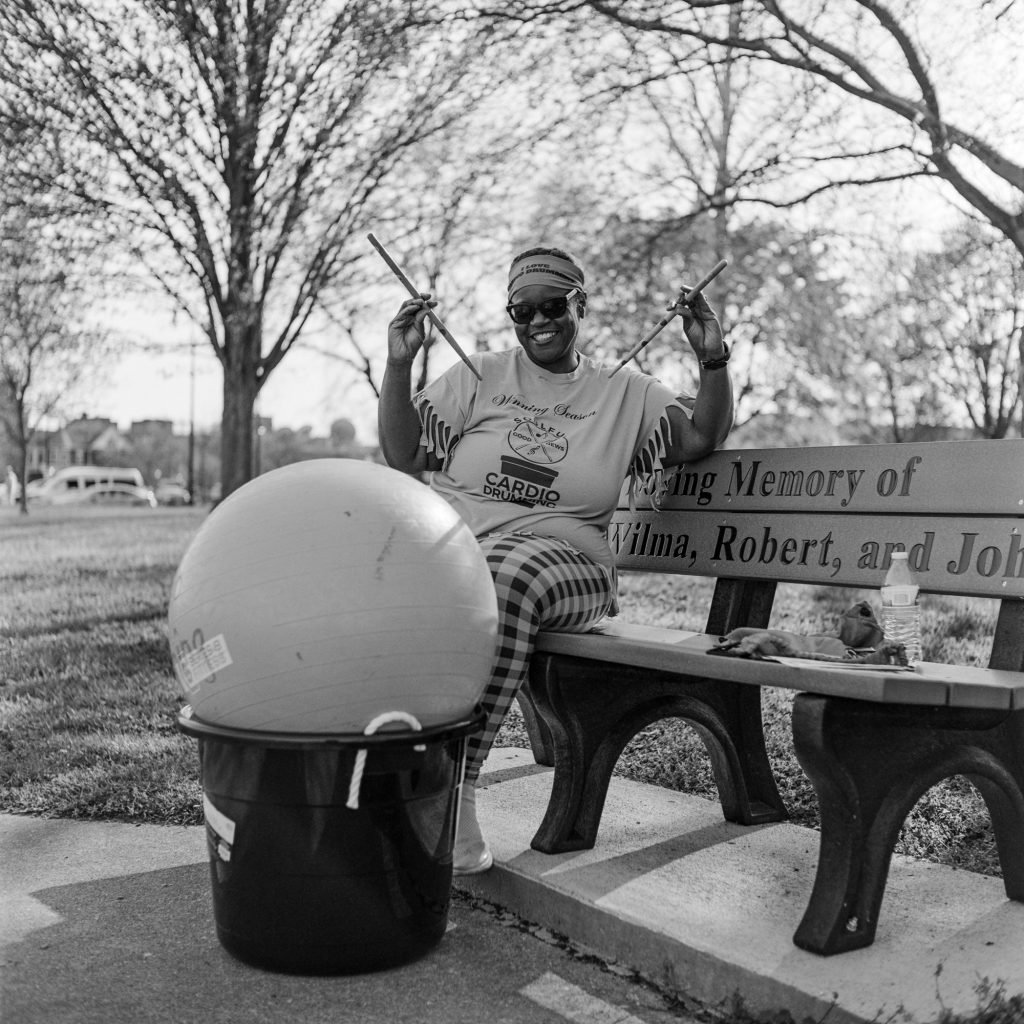
Imran Nuri, Stranger No. 8 from his series “Advice From America.” Photo courtesy of the artist.
What was your goal in creating the portraits of your subjects?
I wasn’t as interested in making aesthetically pleasing photos that would get likes on Instagram; I was more interested in challenging myself and just capturing people as they are. Because of that mentality, some of the portraits are gorgeous, and others are not.
I never asked the strangers to pose in any particular way, just for them to do what felt comfortable. I think because I was able to make each person feel comfortable with me before photographing them, their portraits ultimately show them in a more relaxed and natural way.
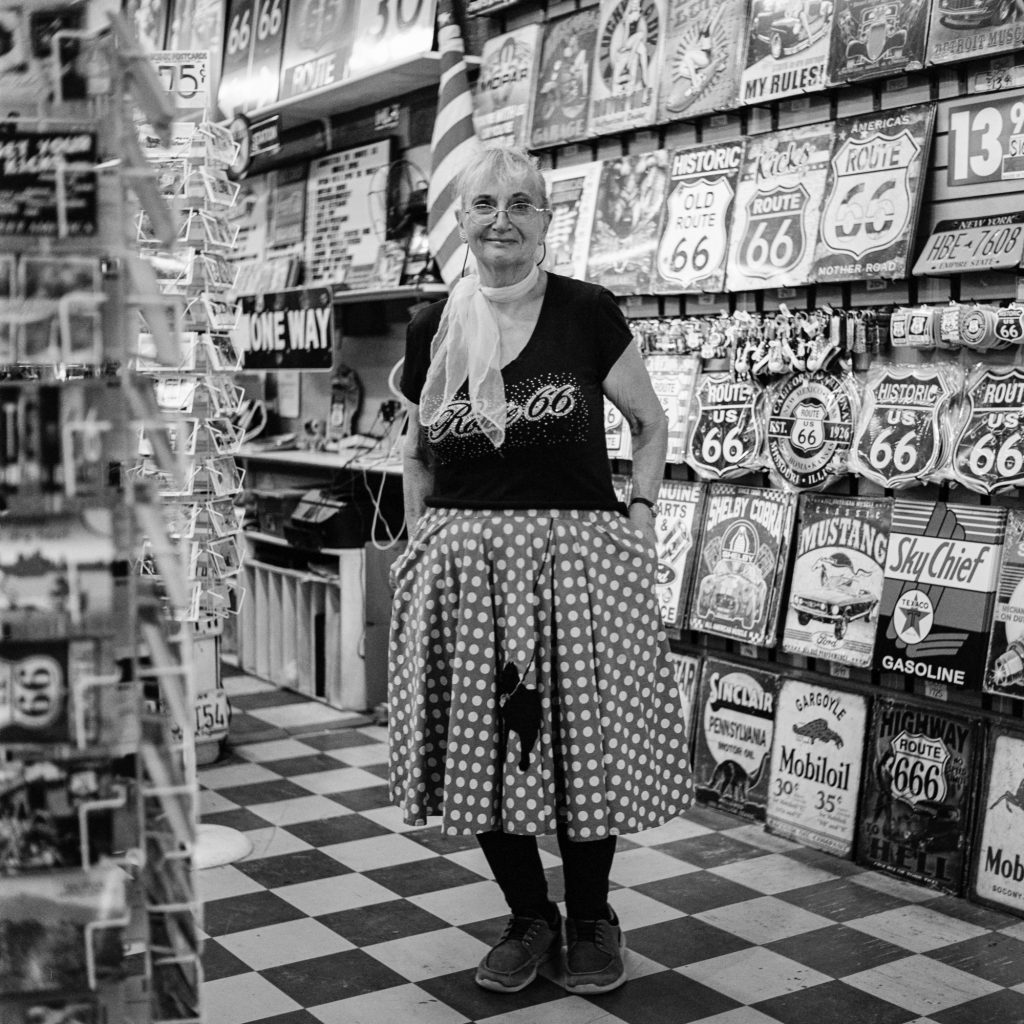
Imran Nuri, photo from his series “Advice From America.” Photo courtesy of the artist.
What was the best advice you received?
The one that stuck out the most was near the beginning of my journey and it set the tone for the entire trip. I met a 23-year-old man on a bridge at Harpers Ferry National Park [in West Virginia] who told me that he was diagnosed with cancer at 19. Going through the entire experience of the past few years had him constantly thinking about the fragility of life and the false promise that everyone lives to be 80.
His advice was to enjoy every single moment—the good, the bad, the in-between—because you never know how long you have left. I thought about that advice every single time I had a wonderful moment, every time I had a terrible moment (I was in a car accident on day 10), and every time I felt an inkling of a negative emotion. It’s simple advice, but it carries extraordinary weight coming from a 23-year-old with cancer.
More Trending Stories:
Meet Manuel Solano, the Artist Who Paints Flamboyantly Feathered Dinosaurs and ‘Basic’ Celebrities
Independent Artists Are Fighting Back Against A.I. Image Generators With Innovative Online Protests